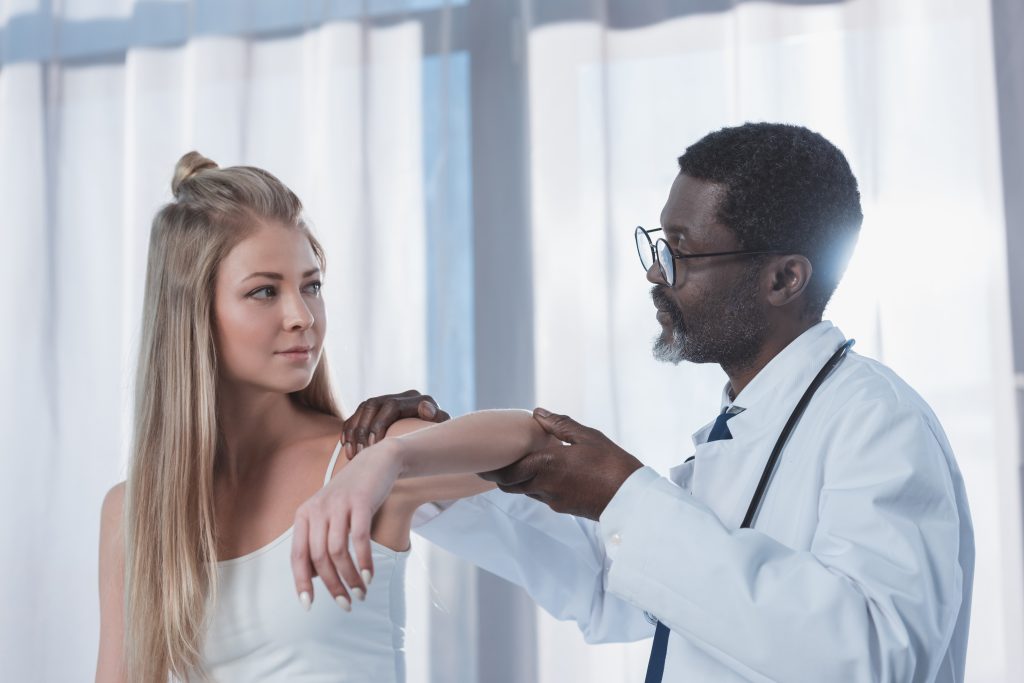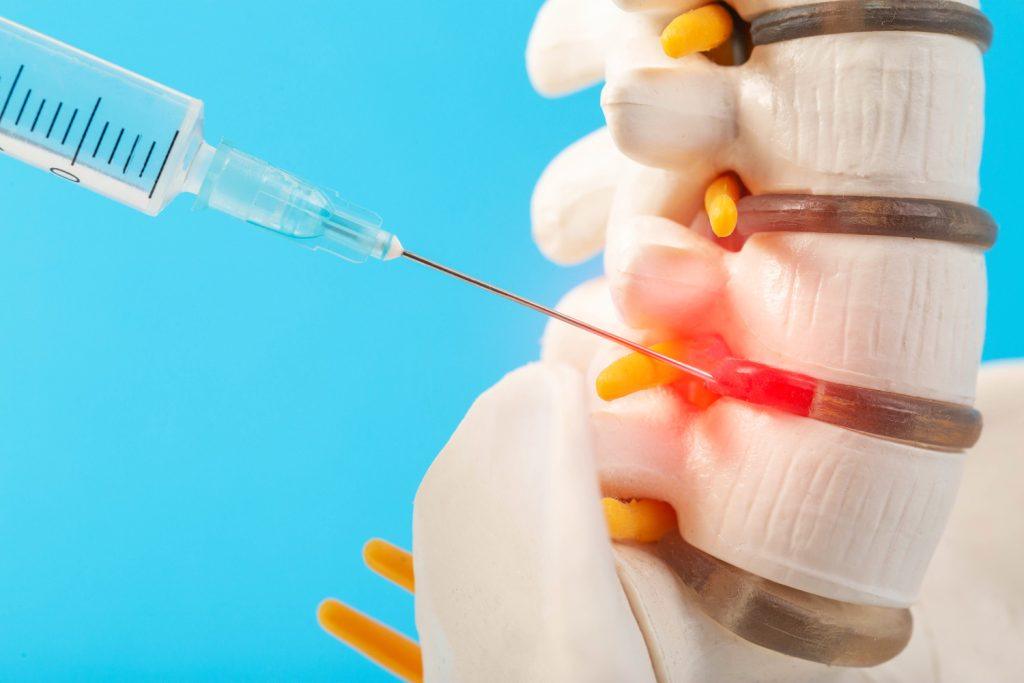Shoulder Reconstruction Surgery: What to Expect & Recovery Tips

Serious shoulder injuries or chronic conditions caused by car accidents, slips and falls, and other incidents can lead to long-term pain and mobility problems. Shoulder reconstruction surgery can help you if traditional treatments and medications fail.
This article will discuss how shoulder reconstruction surgeries can address rotator cuff tears, arthritis damage, joint instability, and other similar conditions. We will tackle what you can expect from these procedures and provide tips for a faster recovery.
At Surgery Consultants of Florida, we only want to give you the best medical care. Regardless of the injury, our team of medical professionals is always ready to help you.
Understanding Shoulder Reconstruction Surgery
Shoulder reconstruction surgery is a type of extremity surgery designed to repair damaged structures in the shoulder. This medical procedure restores function and relieves shoulder pain. Doctors will usually recommend a specific type of shoulder surgery if the patient’s pain and mobility issues persist.
What to Expect From Shoulder Surgeries
Before undergoing shoulder surgery, you should prepare for detailed evaluations. These could include X-rays, MRIs, and other imaging tests. You may experience pain after the surgery because the procedure may involve the removal of bone spurs, stabilization of the joint, or repair of torn tissue.
When it comes to recovery, it could take weeks or months before you can go back to your usual activities. With proper physical therapy and medication, your recovery could be faster. But this will depend on what shoulder condition you’re suffering from.
Main Types of Shoulder Reconstruction Surgeries
Surgeons can classify shoulder reconstruction surgeries into two categories: minimally invasive and invasive. Let’s discuss the two main types of this procedure.
Arthroscopic Shoulder Surgery
Shoulder arthroscopy is a minimally invasive technique in shoulder reconstruction surgeries. Doctors will use a tiny camera and small surgical tools inserted in small incisions. This less invasive surgery is typically used in subacromial decompression to relieve shoulder impingement.
It is also used for SLAP repair and labrum repair. Aside from these, arthroscopic shoulder surgery is also done to conduct rotator cuff repair to reattach torn tendons to the shoulder bone.
Open Shoulder Surgery
Surgeons need to perform open shoulder surgery, such as open reduction and internal fixation, or ORIF, to gain more access to the joint. In severe cases, doctors will suggest invasive shoulder surgery only if arthroscopic procedures no longer suffice.
In open shoulder reconstruction surgery, surgeons fix bone fractures with plates or screws for stabilization.
Why You Need Shoulder Reconstruction Surgery
When non-surgical treatments no longer suffice, you must consider shoulder reconstruction surgery. Some of the common conditions treated by this procedure include the following:
Rotator Cuff Injuries
Rotator cuff injuries occur when the muscles and tendons that stabilize the shoulder tear or wear down. You may experience a reduced range of motion, shoulder weakness, and pain, especially when lifting objects or doing other activities.
Shoulder Impingement
Shoulder impingement happens when something pinches or inflames your shoulder tendons. Among the causes are injuries and overuse of your shoulders. Some signs you may experience include sharp pain when moving your arm or lifting objects.
Frozen Shoulder
When your joint capsule becomes inflamed, it can cause stiffness and pain. This may lead to a frozen shoulder. Most people with shoulder impingement need surgery. This surgery helps release tight tissues and restore their range of motion.
Chronic Shoulder Pain
Tendon damage, joint degeneration, and past injuries can lead to chronic shoulder pain. This persistent discomfort is difficult to treat with physical therapy and medications. Surgeons must perform surgery to address structural damage, reduce pain, and improve functionality.
Recover Faster With These Helpful Tips
Recovering from shoulder reconstruction surgery requires commitment, patience, and proper care. Here are helpful tips to regain your strength and mobility safely and faster.
Focus on Post-Surgery Care
Your doctor will usually require you to wear a supportive sling for a duration of four to six weeks. They’ll also prescribe medications and ask you to use ice packs several times a day to reduce the pain and swelling. Follow wound care instructions to prevent infection and help with healing.
Commit to Rehabilitation
Within two weeks, start passive shoulder movements as your surgeon instructed. To improve strength and restore range of motion, engage in physical therapy. You can also do occupational therapy if your daily tasks become challenging during rehabilitation.
Make Healthy Adjustments in Lifestyle
Avoid lifting any heavy objects or making sudden shoulder movements or engaging in any strenuous activity before rehabilitation is complete. Avoid bad habits, such as drinking alcohol and smoking. If you frequently eat fast food, try to avoid it. Instead, eat a balanced diet rich in vitamins, protein, and minerals. A healthy diet can support your body as your muscles, tissues, and bones heal.
Trust SCOF for Shoulder Surgery and Recovery
At SCOF, we understand the importance of finding the right medical professionals for your shoulder reconstruction surgery. With over 30 years of experience, our dedicated team of orthopedic surgeons and healthcare experts has helped hundreds of patients improve their lives.
Why Trust Us
Our team comprises skilled surgeons capable of performing successful shoulder surgeries for rotator cuff tears, bone fractures, and other shoulder injuries. Due in no small part to their training and skills honed over the years. We also use advanced techniques and technologies to conduct arthroscopy, robotic-assisted surgeries, and other operations.
What’s In It for You
At SCOF, we only want you to recover and have a better life. Our physical therapists offer personalized exercise plans for mobility, flexibility, and strength. Our team uses advanced methods like nerve blocks and medication management to lessen discomfort after surgery. We will also help you after your successful surgery by providing clear post-surgical care instructions and follow-up appointments. If you want effective shoulder surgery and a quick recovery, contact us today!
Warning: urlencode() expects parameter 1 to be string, array given in /www/wwwroot/surgeryconsultantsofflorida.com/wp-includes/formatting.php on line 5693

